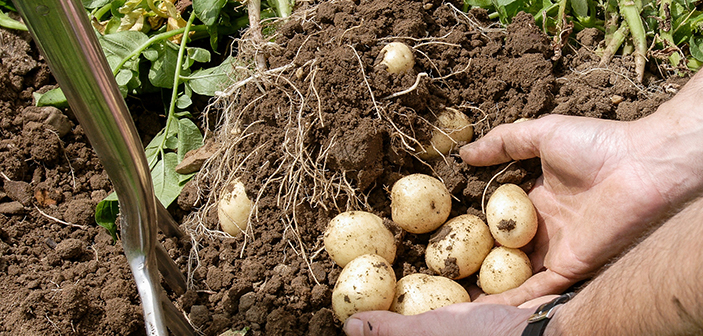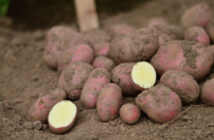With tuber bulking being such a critical, yet energy sapping period in potato crop development, now is the time to consider nutrition applications to support crop health and maintain tuber growth.
If crops are lacking potassium and sulphur at cell expansion during tuber bulking this can lead to various issues, explained FMC crop nutrition technical manager, Chris Bond.
“The requirement for potassium is much greater in potatoes than any other commercial crop. It plays an important role during tuber bulking by encouraging starch production and promoting transport of sugars from the leaves to the tuber. It also ensures efficient water use, which is particularly important if soils become dry during this period,” he said.
“A lot of crops are also lacking in sulphur at this time. This nutrient is necessary for efficient nitrogen utilisation to maintain and prolong healthy canopy growth, which will be important this year.
“This is because potatoes are reported to be about 10 days behind last year’s crop, due to cool conditions and low soil temperatures at planting, resulting slow crop emergence,” said Chris.
He adds that therefore many growers will be looking to keep the crop growing for longer to reach its potential. To achieve this Chris advises planning nutrition applications carefully now to help maintain healthy plants.
“Potassium in particular needs careful nutritional management, due to the affect it has on water regulation in the plant,” he said.
“Fluctuations in soil moisture levels at tuber bulking can cause quality problems, uneven tuber bulking, malformation of tubers and also cracking. Potassium is crucial to help mitigate these issues as it’s involved in plant water status control, including internal water flow and stomatal control.
“Potassium deficiency can also lead to issues with internal tuber blackening and leave tubers more susceptible to damage and bruising during handling. Widely grown chipping variety, Sagitta, is particularly responsive to applications of foliar applied potassium, especially when there’s plenty of moisture available to the crop.”
To avoid quality issues and to deliver the correct nutrients needed to promote starch production during tuber bulking, KuruS® can be applied alongside blight sprays.
“KuruS® is easily tank mixed and contains both potassium and sulphur. It can be applied earlier in the season at tuber initiation, but most importantly during tuber bulking,” he said.
“If growers want to get a better understanding of how their plants are developing, digging up the spuds and seeing where they’re at is a good first step. But, the next and most important thing to consider is managing nutrition as closely as possible during tuber bulking, as it will set up the plant for healthy development and allow growers to achieve good returns on investment,” he concluded.




